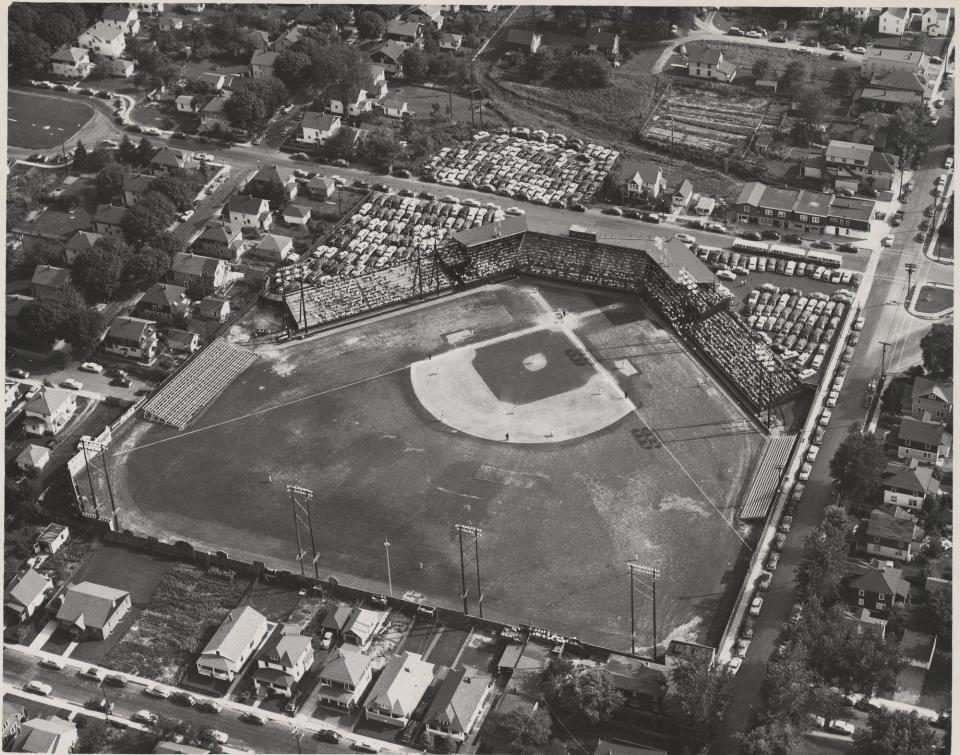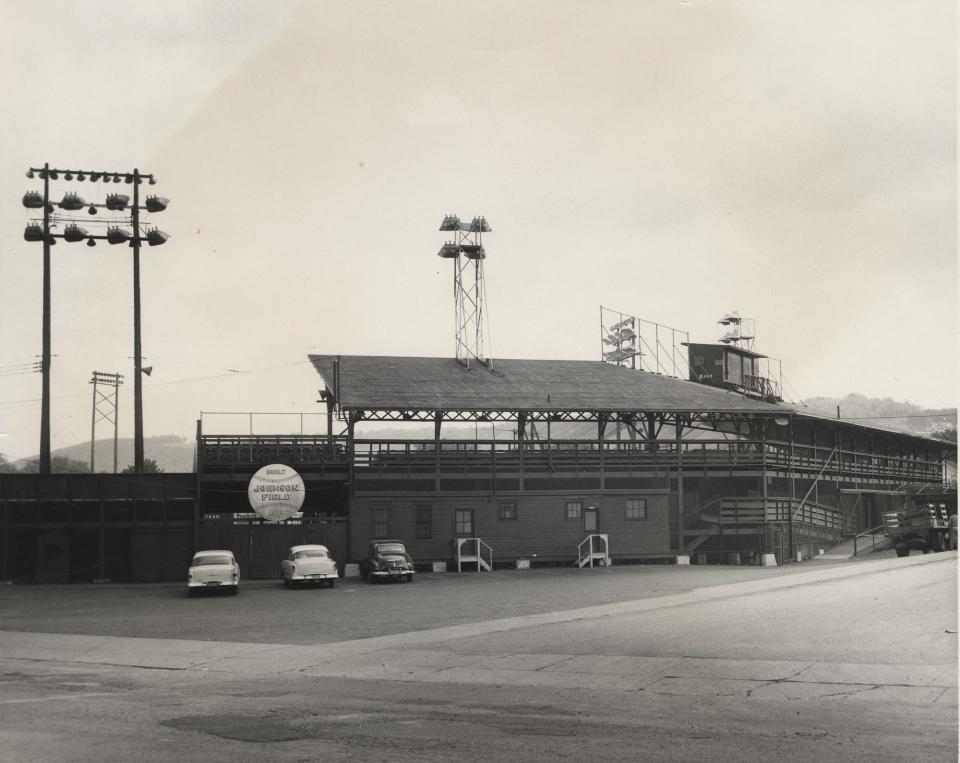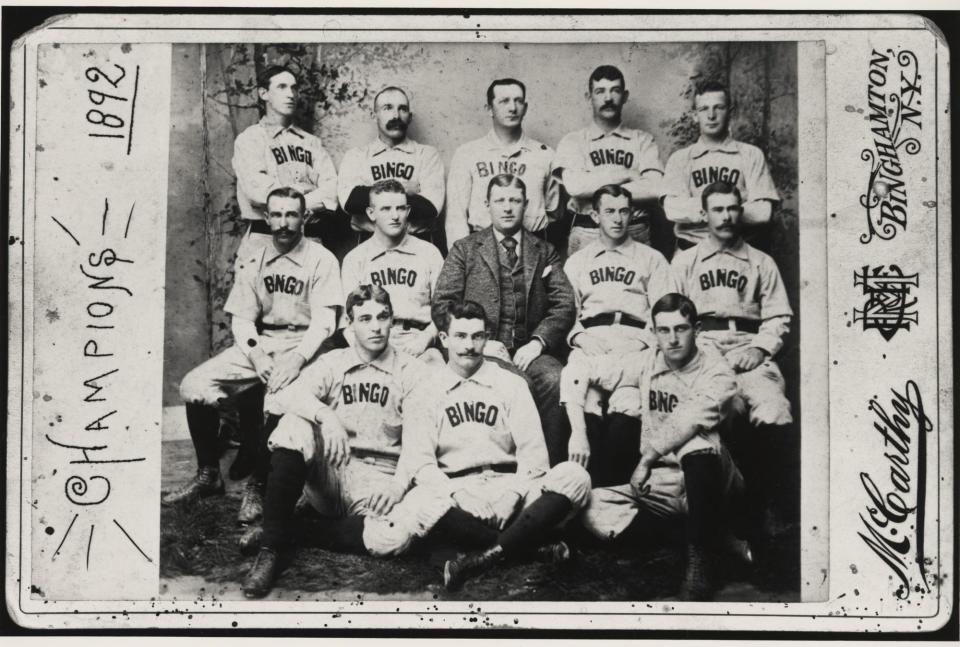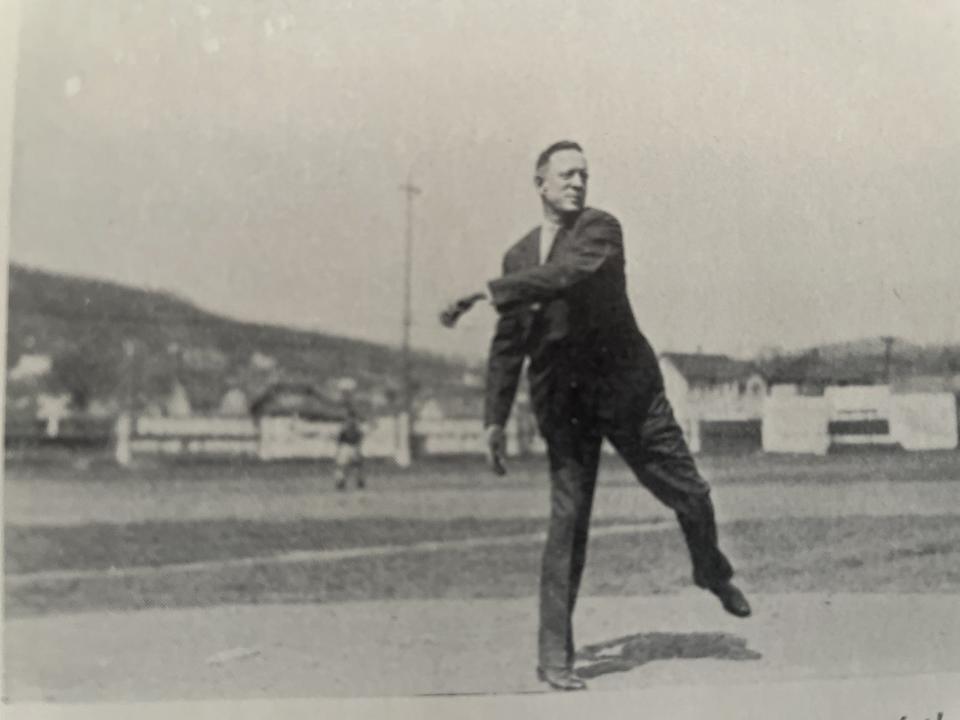Where was Johnson Field in Johnson City? Looking back at our baseball history
- Oops!Something went wrong.Please try again later.
- Oops!Something went wrong.Please try again later.
- Oops!Something went wrong.Please try again later.
- Oops!Something went wrong.Please try again later.
It was a simple wooden structure — nothing amazing. Yet, for the better part of six decades, it provided fun and enjoyment for countless thousands of area residents. Johnson Field in the Village of Johnson City was home to the Binghamton Bingoes — a baseball team purchased by Endicott-Johnson president George F. Johnson. He loved baseball, and he bought the team and moved them from Binghamton to a newly constructed baseball field in the growing village.
In 1913, he built the baseball stadium — surrounded by area homes just off Broad Street. The wooden stadium could hold a good number of attendees to watch the baseball games. One problem with putting the field in amidst the existing homes — many of which were built by Endicott-Johnson for its workers, is that right field was short. It was not up to any league standards. Yet, that did not stop them from playing games.

It did, however, make it easier to hit a home run out of the park because of the depth of the field. Perhaps, that made it a bit easier for Babe Ruth to hit a home run his first time up at bat. By then, the Binghamton Bingoes had changed their name to the Triplets and were associated with the Yankees. Each year, the Yankees would come and play an exhibition game against their minor league team.
Can you imagine being a little child and watching Ruth step up to the plate at Johnson Field? Then the swing and a hit out of the park, for the ball to be collected by one of many boys waiting to collect the balls on the street – only to sell them back to the team.

There is a great photograph of George F. Johnson standing between Babe Ruth and Lou Gehrig. It is a wonderful example of the richness to the area that EJ and Johnson brought. The American Pastime was played thousands of times at Johnson Field. The cost to see a game was always low. When George F. wanted to have Sunday games – a time when many employees could enjoy the outing, the blue laws interfered. Despite many attempts of arriving at a solution, he could not get around the rules at that time.
In our schools:Questions surround 'Satan Club' at Maine-Endwell elementary: What to know about organization, reactions
Can you guess what it is?Washington Post names Southern Tier, NY village as the USA's Ultimate College Town
More history:He built the oldest home in Broome County: Who was Amos Patterson?

Despite this issue, the games continued, as lovers of baseball — both young and old — walked into Johnson Field to take their seats. If you were lucky, you got to sit behind home plate and watch as each batter came up to the plate to try and get a hit. Many of the players were from all over the country. During the season, they would rent rooms from some of the residents living around the stadium. One of my former SUNY Broome students proudly told me that his family’s home on Brown Street had been where Whitey Ford rented a room during his time as a Triplet.
For 55 years, Johnson Field had been a staple in the community. Future major league players such as Whitey Ford, Joe Pepitone and Thurman Munson all came through the area as a Triplet to play in Johnson Field. But time is always not kind in its passage.

By the mid-1960s, plans were already in effect to modernize and move Route 17. Part of the plan would take the new Route 17 straight through the heart of the northern part of Johnson City. The famous short right field was in the way, and in 1968, the last of the Triplets left Johnson Field for the last time and put away their bats for good.
The stadium was torn down as the highway came through. Leaving a good portion of the former field left for the construction of the current Johnson City Senior Citizen’s Center. A new purpose for the land — one that still brings enjoyment to many. Today, you can imagine standing in that parking lot — the site of the original home plate of the Triplets. You can imagine that you are Babe Ruth and lift your bat in the air toward right field. In your mind, you can still hear those immortal words — Play Ball!
Gerald Smith is a former Broome County historian. Email him at historysmiths@stny.rr.com.
This article originally appeared on Binghamton Press & Sun-Bulletin: Binghamton Triplets, Babe Ruth, Lou Gehrig played in Johnson City

